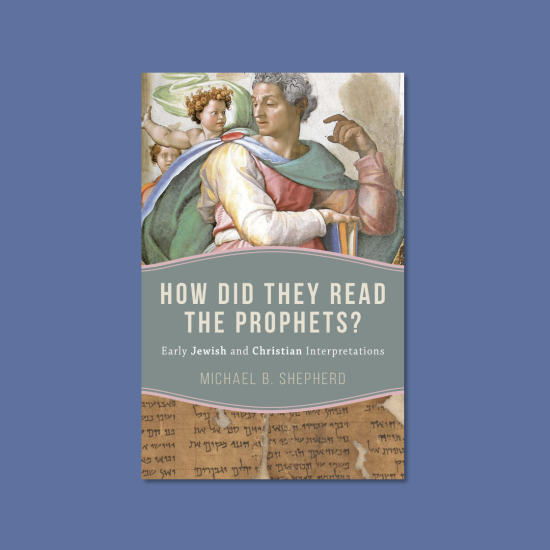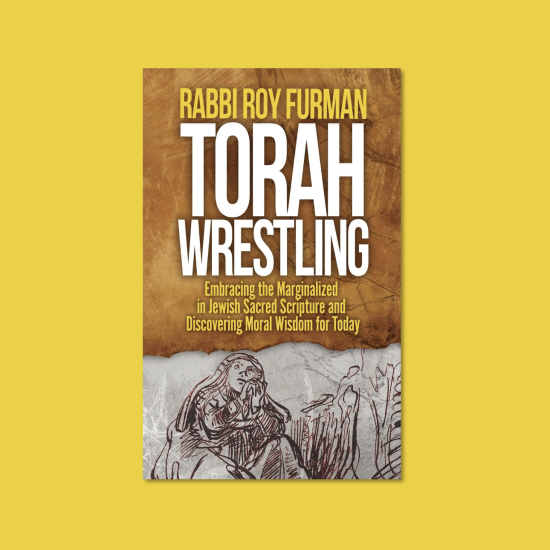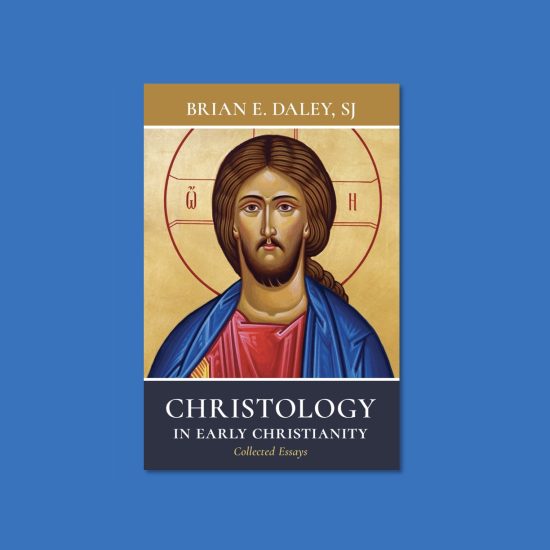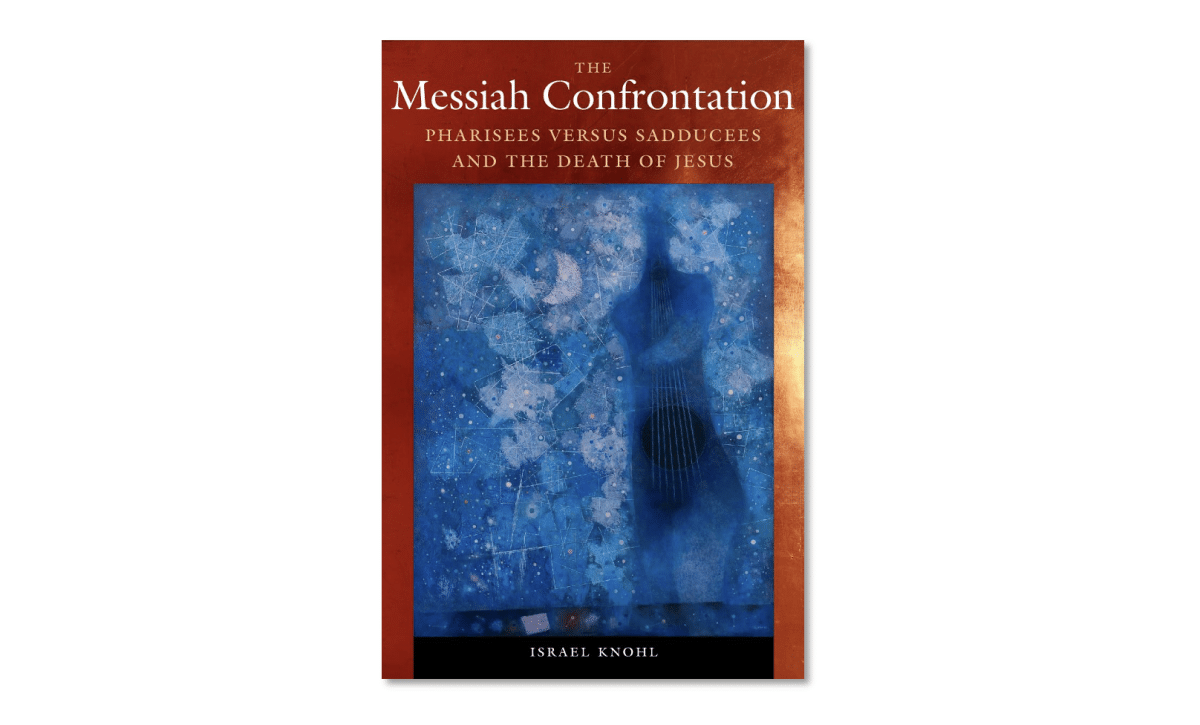
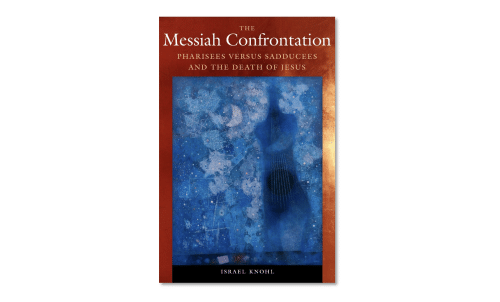
THE MESSIAH CONFRONTATION: Pharisees Versus Sadducees and the Death of Jesus. By Israel Knohl. Translated by David Maisel. Philadelphia, PA: The Jewish Publication Society/Lincoln, NE: University of Nebraska Press, 2022. Xiii + 201 pages.
Christianity, as a religious movement, emerged out of first-century Judaism. It draws its foundations from first-century Judaism and the biblical tradition Christians call the Old Testament. In fact, in its origins, it was primarily a Jewish sect that eventually came to be dominated by nonJews. Over time it became commonplace on the part of many Christians to forget the Jewish origins of the Christian faith, and that has been to the detriment of Christianity because not only did Christians lose touch with their origins this led to persecution and oppression of Jews, who were understood to be Christ-killers and opponents of Jesus’ message. This fed anti-Jewish sentiment and antisemitism, all of which have had horrific effects on the Jewish people. It also resulted in Christians misinterpreting and misunderstanding the mission and message of Jesus and other early Christian leaders including Paul. Nowhere is this more true than the way many Christians talk about the Pharisees (who are the forebearers of rabbinic Judaism). So, could it be that Jesus was much closer to the Pharisees than we tend to think? Could it be that it was the Sadducees, an aristocratic priestly party at odds with the Pharisees over messianic ideas and the resurrection, that contributed to Jesus’ death? So, is it possible for Christians to learn from Jewish scholars about Jesus and the promise of resurrection? If you read Israel Knohl’s book The Messiah Confrontation, the answer will be yes.

Robert D. Cornwall
When I first saw a notice for Knohl’s The Messiah Confrontation I knew I wanted to read it. While many Jews find conversations about Jesus difficult due to the history of Christian persecution of Jews in the name of Jesus, I have found it extremely helpful to see Jesus through Jewish eyes. Consider Amy Jill Levine for example, who has done a wonderful job enlightening us about Jesus and his Jewish context. The good news is that she’s not the only Jewish scholar who has engaged with the story of Jesus. Knohl’s book is a perfect example of what I’m talking about.
I should note that Jesus isn’t the central focus of the book, at least not until the closing chapters. However, what he writes before these chapters will help Christians understand the first-century context of Jesus’ ministry as well as his execution by the Roman authorities in collaboration with one particular religious party, the party that controlled the Temple. Knohl’s primary objective in this book is to explore the origins and differences between the Pharisees and the Sadducees and then show how these differences led to the trial of Jesus and the subsequent execution on the part of the Romans. It is important to remember that crucifixion was a Roman practice and at the time capital punishment was largely in the hands of the Roman occupiers.
The author of this book, Israel Knohl, is the Yehezkel Kaufmann Professor of Biblical Studies Emeritus at the Hebrew University of Jerusalem. He is also a senior fellow at the Shalom Hartman Institute in Jerusalem. He has taught at Harvard, Stanford, the University of California Berkeley, and the University of Chicago Divinity School, and authored several books including The Messiah before Jesus: The Suffering Servant of the Dead Sea Scrolls.
One of the central themes of The Messiah Confrontation concerns the origin and development of messianic ideas within Judaism. Knohl points out that the birth of messianism is found in the destruction of the first Temple in the 6th Century BCE. While messianism was born at that moment, it also has earlier roots in differing views of the monarchy (especially the Davidic monarchy). He notes that while some hoped for the restoration of the Davidic monarchy that wasn’t true for everyone. He discerns two streams of thinking about the monarchy that ultimately led to the emergence of the two major first-century religious parties—the Pharisees and Sadducees. One trajectory envisions the restoration of the Davidic monarchy and takes its cues from Isaiah. The other stream centers on the Temple and priesthood while drawing inspiration from the Torah. This stream eventuates into the emergence of the Sadducees, which is a party that is both anti-messianic and rooted in the primacy of the priesthood. The origins of the two trajectories seem to have different origin points. Whereas Isaiah tends to be pro-monarchy and speaks to situations related to the kingdom of Judah, we see something different in the prophet Hosea who spoke to the situation in the northern kingdom of Israel. While first Isaiah has a pro-monarchy perspective, Hosea took a much more hostile view of the monarchy. Knohl suggests the same is true of Deuteronomy, which he believes originated in the north and focuses more on priesthood than the monarchy, especially a Davidic one.
Knohl connects the messianic visions that stand behind Jesus with Isaiah and the Davidic monarchy (chapter 1). He then explores the anti-monarchy perspective that is expressed in the prophetic ministry of Hosea (chapter 2). While the Northern Kingdom disappeared, as time passed the perspective linked to Hosea made its way to the southern kingdom and influenced certain later developments. I find his discussion of Hosea especially illuminating as I had never thought about how that book might provide the foundations for an anti-messianic trajectory that lead to the Sadducees and eventually to the trial of Jesus.
Knohl weaves these two trajectories throughout the book. Thus, in chapter 3 we return to the development of messianic ideas within Judaism. While the origins of messianic theology lie with Isaiah, we see a reconfiguration of this theology in the prophetic work of Jeremiah. Extending Isaiah’s messianic vision, Jeremiah envisions the emergence of the “righteous Branch” who will rule over Israel. He does this even as he publicly rebukes the last of the Davidic monarchs. With the exile comes a new sensibility about who is anointed. Therefore, in Second Isaiah we see the anointing move from the Davidic kings to Cyrus, who in many ways serves as the hoped-for messiah.
That understanding is further developed in chapter 4, which explores developments in a renewed Jewish presence in Persian-controlled Israel where the Jewish people are permitted to rebuild the Temple. While the Persians allowed for the restoration of the Jewish religion they did not permit the restoration of the monarchy or anything that smacked of monarchy. Therefore, messianic hopes were subsumed under a Temple/priesthood sensibility. It was in this period that the Torah gained a central role in the life of the people. This was especially true under the leadership of Ezra the Scribe, who belonged to the second wave of migrants returning to Israel from Babylon. Ezra was not a political leader but a teacher of the Law. As such, it is with his leadership that a Torah-centered faith takes shape. You can see here the possibilities of an emergent movement that leads to the emergence of the Sadducees. Knohl continues his discussion of the growing distrust and loss of expectation of a restored monarchy at this point. He notes that we see this distrust present in Deuteronomy, as well as the other four books that make up the Torah. He believes the four were compiled in Babylon and then combined with Deuteronomy (chapter 5). Then in chapter 6, he explores how the biblical texts distinguish between the human and divine when it comes to monarchy. What we see here is a vision that is reflected in some of the Psalms that highlight monarchy and one that does not (Torah). The latter insists that God transcends the bodily, and the other allows more room for a connection.
Since the Resurrection is a central distinguishing mark between the two parties explored here, Knohl moves from the conversation about messianism to that of resurrection. He points out that the idea of resurrection is found only in Daniel. Interestingly, and I had missed this in earlier readings and teaching opportunities, Daniel says nothing about the restoration of a Davidic monarchy (messianism). To gain an understanding of the emergence of a doctrine of the resurrection, he explores how Jewish thought moves from the time of Ezra (5th century BCE) to the time of Antiochus IV (2nd Century BCE). The latter period was one of great turmoil as Israel fell under the control first of Alexander and then the various Greek successor states. Interestingly, while Daniel introduces us to the resurrection, something the Pharisees embrace, it tends toward espousing an anti-messianic perspective, something the Sadducees embrace. However, there are elements of a messianic perspective present that lacks an expectation of the restoration of the Davidic line. Central here though is the introduction of a reward for faithfulness. If Chapter 7 focuses on Daniel and the Resurrection, when we turn to Chapter 8, we read of the “Sadducees’ Denial of the Doctrine of Reward.” Knohl reminds us that the Sadducees “were an elite group of priests” born to aristocratic families. Thus, they experienced life differently than the non-elite. For the purposes of the overall discussion, Knohl also reminds us that it is from this group that the High Priests emerge. (p. 101). In this chapter, we learn more about the Sadducees, a group that left no writings and disappeared with the destruction of the Second Temple. Here in chapter 8, Knohl takes note of the sayings of Antigonus of Sokho, who was a disciple of the High Priest Simon the Just (2nd century BCE). Antigonus insisted that observance of the Commandments should not be linked to a reward from God. It is this rejection of a reward for observing the Commandments that comes to define the Sadducees. This is connected with their rejection of messianic expectations.
While the Pharisees and Sadducees are the central figures (along with Jesus) in this study, Knohl also takes note of the role of the Qumran community in the development of messianism during the period before Jesus arrives on the scene, especially its “accounts of an exalted and suffering messiah” (chapter 9). Although many Jews of this period assumed that a military messiah—a Davidic king—would emerge to restore Israel to its greatness, it wasn’t the only vision extant. While the Pharisees expected a Davidic monarch/messiah (and thus most opposed the Hasmonean dynasty), the Qumran community/Essenes explored the idea of the expected messiah to be understood in terms of Second Isaiah’s suffering servant. This is important because this vision has connections with the vision embraced by Jesus. This chapter is essential reading if we are to understand Jesus’s message and mission and the way some Jews might embrace his vision.
From Qumran, we move in chapter 10 to the expectations on the part of the Pharisees regarding the imminent appearance of the Messiah. They differed from the Essenes in that they envisioned to coming of a Messiah who would liberate the land. Not surprisingly, they were the most popular faction in Jewish life because they were seen as being the ones who would guide the people in living holy lives in anticipation of the coming blessings of God. It is this Davidic expectation that led them to serve as critics of the Hasmonean dynasty after the Hasmoneans embraced kingship (the Hasmoneans were a priestly family and not of the Davidic line). The key here is that they, unlike the Sadducees, did expect a messiah and thus were more receptive to Jesus’ vision.
After all of these twists and turns that help us understand both the development of messianic ideas (and rejection of them) as well as the development of the doctrine of the resurrection (and the rejection of that doctrine), we come to Jesus and his messianic vision and his embrace of resurrection. In developing his view of Jesus’ role in all this, Knohl leans largely on Mark though he occasionally references Matthew and Luke. He notes how Jesus saw himself as a suffering messiah and how that did not fit the Pharisaic expectation. At the same time, Jesus’ vision had its roots in the same ethos as that of the Pharisees (along with the Essenes). Having set up Jesus’ self-understandings in chapter 11, we turn in chapter 12 to Jesus’ trial. Knohl makes it clear that this affair involved only members of the Sadducean party, who were protective of the Temple and had a governing partnership with the Roman authorities while rejecting messianic ideas. Therefore, based on several points, the Sadducees were unreceptive to Jesus and his movement. He wants us to understand that had the Pharisees been in charge of the trial, Jesus would have been set free. In making this revelation, Knohl hopes that through this book, he can provide a foundation for better Christian-Jewish relations, especially one that allows for a conversation about Jesus. As a Christian, I would welcome that opportunity.
Ultimately the point here is that the trial of Jesus should not be a point of contention between Jews and Christians. His death reflects an inter-Jewish debate over whether or not a messiah should be expected and whether Jesus fits the expectation. In Knohl’s opinion, Jesus could have fit the expectations of at least some Jews, especially the Essenes but also many Pharisees. In my estimation, this book really is a gift to those of us who wish to pursue Jewish-Christian dialog that allows for a conversation about Jesus. His book also helps us read the New Testament and its descriptions of the various religious parties and their interactions with early Christians. As such, The Messiah Confrontation offers us a helpful guide to the roots of Jesus’ own sense of calling and purpose, while allowing us to embrace the Jewish roots of the Christian faith more fully (especially the Pharisaic ones to rehabilitate the Pharisees in the eyes of Christians). All in all, this is a most intriguing book that I hope will be read by many—both Jews and Christians! I believe it will open the eyes of many to our Christian roots while perhaps helping our Jewish friends reclaim Jesus as one of their own.
This review originally appeared on BobCornwall.com.
Robert D. Cornwall is an ordained minister in the Christian Church (Disciples of Christ). Now retired from his ministry at Central Woodward Christian Church (Disciples of Christ) of Troy, Michigan, he serves as Minister-at-Large in Troy. He holds a Ph.D. in Historical Theology from Fuller Theological Seminary and is the author of numerous books including his latest books: Called to Bless: Finding Hope by Reclaiming Our Spiritual Roots (Cascade Books, 2021) and Unfettered Spirit: Spiritual Gifts for the New Great Awakening, 2nd Edition, (Energion Publications, 2021). His blog Ponderings on a Faith Journey can be found at www.bobcornwall.com.




